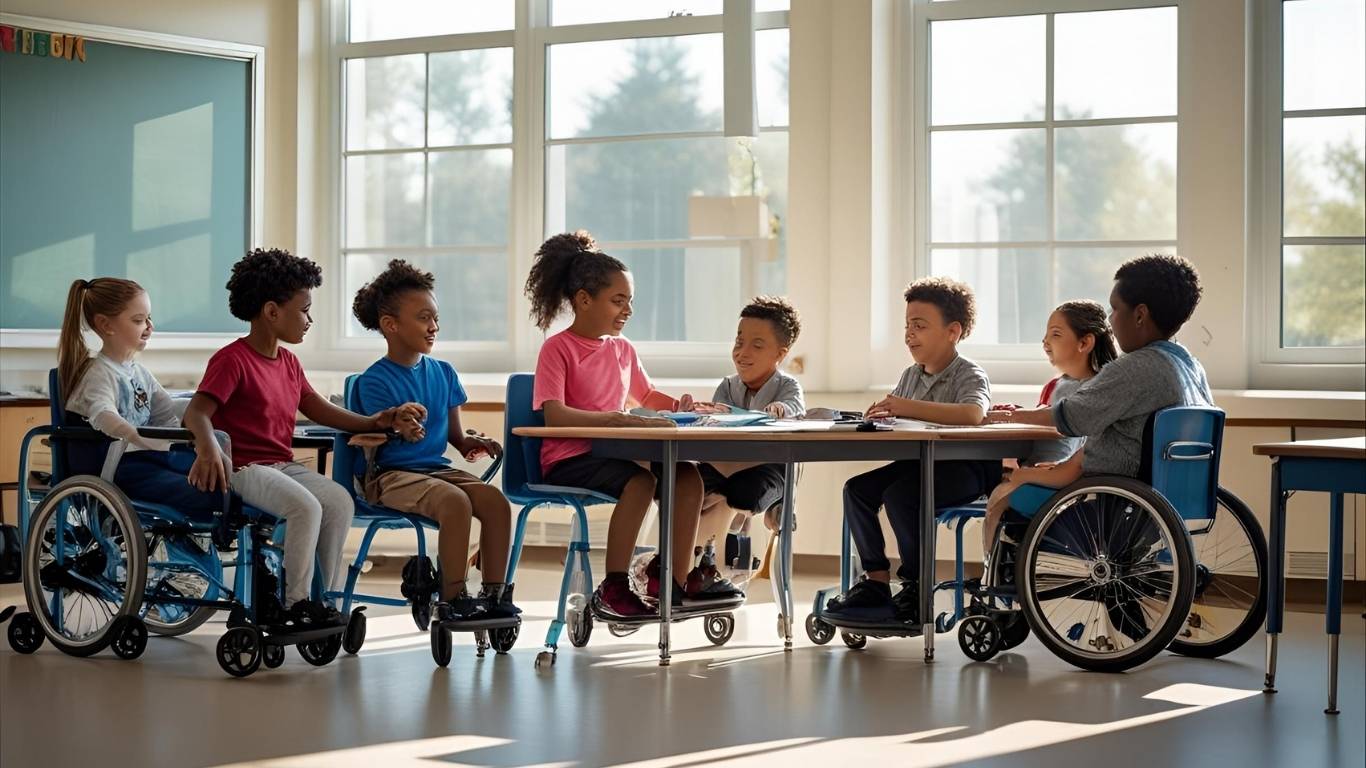7 Tips for Inclusive Education in the Classroom
Introduction to Inclusive Education
Imagine walking into a classroom where every student—no matter their background, ability, or learning style—feels welcome, valued, and empowered. That’s the magic of inclusive education. It’s not just about putting everyone in the same room; it’s about ensuring every student has the tools, support, and opportunity to thrive.
What Is Inclusive Education?
Definition and Core Principles
Inclusive education is a teaching approach that embraces diversity and ensures that all students, regardless of their abilities or backgrounds, learn together in the same classrooms. It promotes equal access, participation, and success for every learner.
Inclusive vs. Integrated Education
Many confuse inclusion with integration. Integration means placing students with special needs into mainstream classrooms, often without changing the teaching approach. Inclusion, however, adapts teaching methods and classroom practices to meet everyone’s needs.
Why Inclusive Education Matters
Social and Emotional Benefits
When students of all abilities learn side by side, they build empathy, respect, and lasting friendships. Inclusive classrooms reduce bullying and increase feelings of belonging.
Academic Improvements
Research shows that inclusive education doesn’t just help students with disabilities—it boosts academic outcomes for all learners through differentiated instruction and collaborative learning.
Human Rights Perspective
Tip 1: Know Your Students
Learn About Individual Needs
Get to know each learner’s strengths, challenges, and preferred learning styles. This helps you tailor lessons in a way that supports everyone.
Build Strong Relationships
Trust is foundational. When students feel seen and heard, they’re more engaged and motivated. Simple gestures like asking how they’re doing can go a long way.
Tip 2: Differentiate Instruction
Use Multiple Teaching Methods
Some students learn best through visuals, others through hands-on activities or discussions. Mix it up—use videos, diagrams, storytelling, and interactive tasks.
Vary Assessment Techniques
Not all learners shine through traditional tests. Use projects, presentations, and portfolios to give everyone a chance to showcase their knowledge.
Tip 3: Create a Safe and Welcoming Environment
Foster a Culture of Respect
Set clear expectations about kindness, respect, and inclusion. Celebrate diversity—whether it’s culture, language, or learning style.
Use Inclusive Language and Materials
Ensure your teaching materials reflect diverse backgrounds. Avoid stereotypes and use gender-neutral and respectful language.
Tip 4: Collaborate With Support Staff and Families
IEP and Support Planning
If a student has an Individualized Education Program (IEP), work closely with special educators to implement it effectively in your classroom.
Parent-Teacher Communication
Parents know their kids best. Regular communication with families helps build consistent support for students both at school and home.

Tip 5: Use Assistive Technology and Tools
Tech for Learning Disabilities
Tools like text-to-speech apps, audiobooks, and screen readers can empower students with reading or writing difficulties.
Tools for Communication and Mobility
For students with physical or speech limitations, tools like voice-output devices, adaptive keyboards, and mobility aids can make a world of difference.
Tip 6: Promote Peer Support and Group Work
Buddy Systems and Peer Mentors
Pairing students together fosters cooperation and mutual learning. Peer buddies can help with transitions, note-taking, or social integration.
Cooperative Learning Structures
Use small groups where each student has a specific role. This boosts participation and helps all learners feel involved and capable.
Tip 7: Continue Learning and Reflecting
Professional Development
Stay updated. Attend workshops on inclusion, read new research, and network with other inclusive educators.
Reflective Teaching Practice
Take time to reflect on what’s working and what’s not. Ask students for feedback and be open to change. Growth is part of the journey.
Common Challenges in Inclusive Education
Time and Resource Constraints
Let’s be real—teachers are stretched thin. Lack of time, resources, or training can make inclusion feel overwhelming. That’s why systemic support is essential.
Teacher Readiness and Training
Not all teachers feel prepared for inclusive classrooms. Ongoing training, mentorship, and administrative support can bridge that gap.
Success Stories from Inclusive Classrooms
Real-World Examples
In a school in Finland, inclusive practices led to a 40% improvement in literacy scores. In a rural classroom in India, students with disabilities performed on par with their peers thanks to simple inclusive strategies.
What We Can Learn
Inclusion doesn’t require perfection—just intention. Small, consistent efforts can transform learning experiences for everyone involved.
Conclusion
Inclusive education is more than a strategy—it’s a mindset. It’s about believing that every student deserves to feel valued, supported, and successful. While the journey requires effort and adaptability, the rewards are immense: a classroom full of compassionate, confident, and capable learners.
FAQs
What is the difference between inclusive and integrated education?
Inclusive education adapts teaching for all learners; integrated education places students in mainstream classrooms without altering instruction.
How can teachers support students with disabilities?
By using differentiated instruction, collaborating with support staff, and providing tailored tools or accommodations.
What are some examples of assistive technology?
Text-to-speech software, speech-to-text tools, audio books, screen readers, and adaptive keyboards.
How do I handle behavior issues inclusively?
Understand the root causes, use positive reinforcement, and involve students in setting classroom rules and routines.
Can inclusive education benefit all students?
Absolutely! It promotes empathy, improves teamwork, and enhances learning outcomes for both neurotypical and neurodivergent students.



